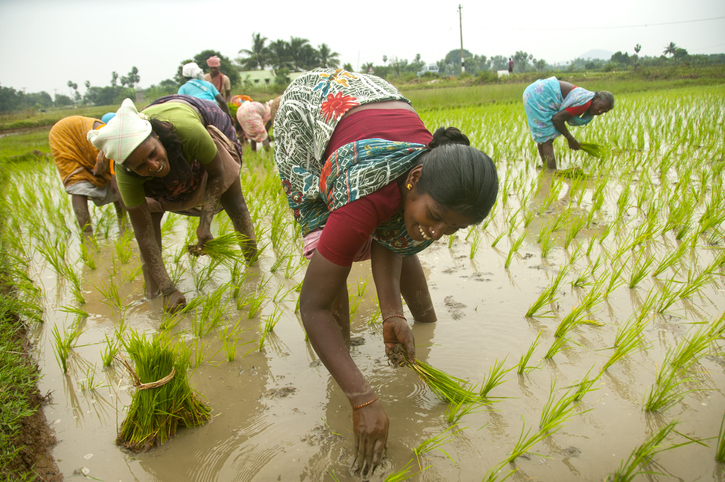In support of China’s Belt and Road initiative for international cooperation, the country is working to establish a new global financial architecture. This column argues that we are observing the emergence of new configurations of power in the world, and the displacement of the epicenter of the international system, after five centuries, from the North Atlantic to the Asia-Pacific region.
In recent years, especially after the 2008 US financial crisis, China has been making an all-out effort to build new power configurations on a global scale.
First, in a statement in March 2009, China’s central bank president, Zhou Xiaochuan, signaled the need to overcome the vulnerabilities of a global economy anchored in a national currency. He underlined the importance of rethinking Keynes’ Bretton Woods proposals, perhaps by strengthening special drawing rights as a substitute for the US dollar. Since then, more than rhetoric, the internationalization of the yuan has been a central orientation of Chinese foreign policy.
Second, the BRICS (Brazil, Russia, India, China, and South Africa) group initiative at its 6th Summit in Fortaleza in July 2014 resulted in the creation of the New Development Bank and the Contingent Reserves Agreement. These comprise a bank to finance investment projects in the BRICS and other countries in the order of subscribed capital of US$50 billion and authorized capital of $100 billion; and a stabilization fund to share reserves worth hundreds of billions of dollars in the event of a financial crisis.
Third, China has amplified its role as a financier of global infrastructure through the China Development Bank and the Export-Import Bank of China, established in 1994 as state-owned development banks. Between 2005 and 2012, Chinese funding for Latin America surpassed $86 billion, more than the World Bank, the US Eximbank and the Inter-American Development Bank combined. In addition to abundant credits, there are generally conditions for negotiations without political conditionalities, which is an attractive proposition to many countries.
Fourth, foreign direct investment and China’s contracts have grown at surprisingly high rates. Increasingly, the country has become not only a major recipient but also a major source country for foreign direct investment. Derek Scissors has carefully studied the exact scale of evolution and its distribution by country and sector.
Indeed, China is becoming the world’s largest source of foreign direct investment, driven largely by state-owned enterprises that act in accordance with government interests. It is no coincidence that the number of Chinese companies on the Fortune 500 list has increased exponentially: in the 2014 ranking, there were already 95 in China (including Hong Kong), while the number for the United States had dropped to 128 from 132.
Fifth, China is offering alternative initiatives to the traditional SWIFT (Society for Worldwide Interbank Financial Telecommunication) banking domain founded in 1973 in Brussels as the main standardized mechanism for global financial transactions. This is the case, for example, with its proposal to create an international payment system (CIPS) in 2015 – an initiative that Russian government officials sought to expand by creating a national payment system.
In the background, the Chinese government is working towards global de-dollarization and the internationalization of its own currency, the yuan, through the signing of bilateral exchange swaps, the establishment of direct settlement centers outside Asia and the scheduled opening of the capital market.
Sixth, China has created the Silk Road Fund, comprising $40 billion in resources from international reserves and Chinese banks (the China Investment Corp., the Export-Import Bank of China and the China Development Bank). The goal is to deepen integration in Eurasia by creating a New Silk Road.
At the Boao Forum for Asia in March 2015, President Xi Jinping discussed guidelines for the New Silk Road. The government reiterated that cooperation between East and West must strengthen mutual inclusiveness, learning, and mutual benefit so as to foster political coordination, infrastructure development, and economic integration.
Finally, there was the official creation of the Asian Infrastructure Investment Bank (AIIB) in October 2014, initially with capital of $100 billion, of which half was allocated by China. This is a multilateral development bank focusing on the development of infrastructure and other productive sectors in Asia, complementing and cooperating with existing development banks.
Together, all these factors indicate a change in the structure of global financing, making China more of a major player than ever before. China is poised to lead the process of Eurasian integration, to reconstitute a Sinocentric system, and to elevate its status as a global power.
It is prepared to challenge the US project of a ‘neoliberal’ and interventionist globalization. In fact, China is broadening its engagement and becoming more assertive by promoting this new financial architecture, which in turn supports the Belt and Road initiative, which in practice is ‘globalization with Chinese characteristics’.
Such a policy will have a profound impact on the emerging world order, generating enormous challenges, such as the contradictions of the Eurasian development and integration process itself, the superpower reaction (the United States), Chinese competition with regional powers (India and Japan, above all) and crises and instability in poor countries in the Eurasia and Asia-Pacific regions.






